Are you curious how to make your brand stand out online without breaking the bank? In the digital age, guerrilla marketing digital age combines creativity and technology to achieve just that. This article delves into effective strategies that maximize impact and minimize costs.
Key Takeaways
- Guerrilla marketing in the digital age emphasizes creativity and surprise to engage audiences effectively, using low-cost tactics on digital platforms.
- Social media is crucial for amplifying guerrilla marketing campaigns, making viral content, interactive events, and influencer collaborations key components for success.
- Innovative tactics like augmented reality, gamification, and sustainability initiatives are shaping the future of digital guerrilla marketing, enabling brands to create memorable and immersive experiences.
Understanding Guerrilla Marketing in the Digital Age
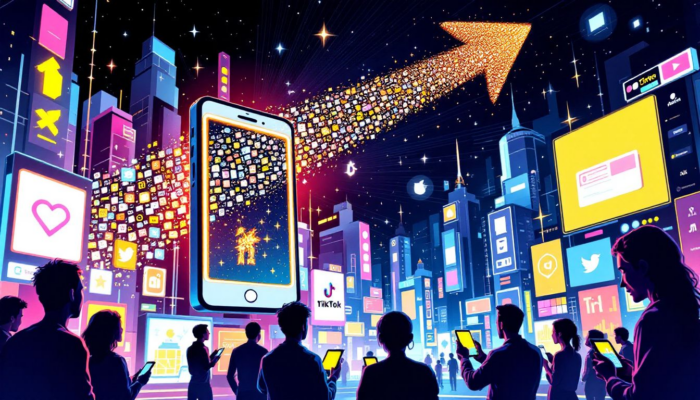
Guerrilla marketing is an innovative and unconventional approach to advertising that aims to attract customers without interruption. Unlike traditional marketing campaigns, guerilla marketing relies on creativity and surprise to capture attention and raise brand awareness.
In the digital context, this means employing innovative guerrilla tactics in online spaces to achieve maximum impact with minimal resources.
A unique guerrilla marketing idea can further enhance these efforts, and exploring guerrilla marketing ideas can lead to even more creative solutions. Additionally, implementing a guerrilla marketing strategy can amplify the effectiveness of these campaigns.
The digital landscape has significantly transformed guerrilla marketing, making it more accessible and effective for a wider range of businesses. Integrating guerrilla marketing with other strategies, such as social media and display advertising, enhances overall efforts and creates a greater impact. This modern incarnation of guerrilla marketing, often called growth hacking, reflects its adaptation to the current digital landscape.
Exploring the evolution and key characteristics of guerrilla marketing in the digital age helps set the stage for specific tactics and strategies discussed later.
Evolution of Guerrilla Marketing
Guerrilla marketing, introduced by Jay Conrad Levinson in 1984, was a response to traditional marketing methods. It emphasized low-cost approaches to promoting brands creatively and unexpectedly. Over the years, guerrilla marketing grew in popularity, particularly in the early 2000s, as businesses sought fresh ideas to stand out in a saturated market.
The advent of digital platforms has significantly altered the landscape of guerrilla marketing. Emerging technologies such as AI, AR, and VR have transformed guerrilla marketing strategies, allowing brands to create immersive and personalized experiences. This shift has made guerrilla marketing more accessible and effective, emphasizing nontraditional campaigns on a low budget.
The adaptability and flexibility of guerrilla and digital marketing tactics are crucial in navigating the ever-evolving digital space.
Key Characteristics of Digital Guerrilla Marketing
One defining feature of digital guerrilla marketing is its reliance on creativity to make campaigns stand out in a crowded digital landscape. Innovative and unconventional tactics are at the heart of digital guerrilla marketing, encouraging user sharing and high engagement. Guerrilla marketing creates memorable experiences without the high costs of traditional advertising, aiming to maximize impact while minimizing expenses.
Social media plays a crucial role in the rapid spread of guerrilla marketing campaigns, enhancing their reach and impact. The growing demand for personalized campaigns driven by data analytics further underscores the importance of creativity and innovation in digital guerrilla marketing. These characteristics help campaigns go viral, increasing brand visibility and engaging a broader audience.
Leveraging Social Media for Guerrilla Marketing
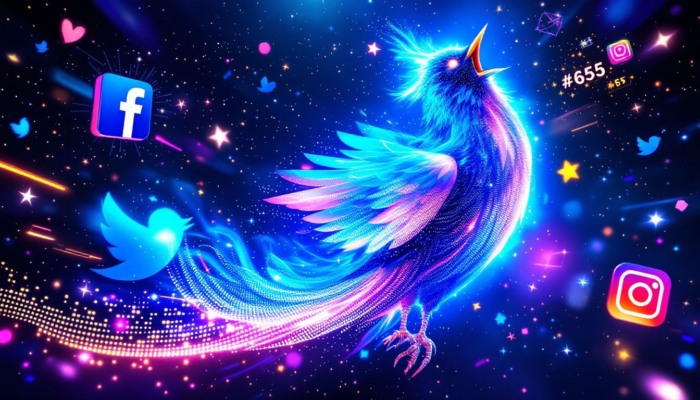
The rise of the internet and social media has revolutionized guerrilla marketing, shifting its focus towards engaging content that can go viral. Social media platforms are crucial for creating viral content, facilitating direct audience interaction, and launching cost-effective campaigns. By leveraging social media, brands can reach a global audience quickly and effectively.
However, maintaining momentum and keeping the buzz alive post-campaign is essential for long-term success. Creative content, interactive challenges, and engaging narratives are key elements in social media campaigns that capture audience attention and drive engagement.
This section explores creating viral content, launching interactive campaigns, and collaborating with influencers to enhance guerrilla marketing efforts.
Viral Content Creation
Viral marketing refers to campaigns that spread quickly through word of mouth, aiming to create content that goes viral and maximizes organic sharing. The goal is to craft content that resonates with the audience and prompts sharing, reaching a broader audience. Effective user interaction is crucial for engagement, and strategies to enhance virality include utilizing press releases, paid promotions, influencer coordination, monitoring audience feedback, and integrating social media elements.
Creating viral content involves understanding what resonates with your target audience and crafting messages that evoke emotions or provide value. Whether it’s a humorous video, a thought-provoking post, or an interactive challenge, the key is creating content people want to share with their networks.
Interactive Social Media Campaigns
Interactive campaigns invite direct audience participation, enhancing their connection with the brand. By making users feel involved and contributing to a greater cause, interactivity significantly boosts campaign engagement. Utilizing engaging formats like interactive events, such as Samsung’s campaign, which featured a platform allowing users to share night photos, can create a sense of community and drive engagement.
AI also provides real-time consumer engagement through chatbots and personalized recommendations. For instance, interactive advertisements powered by AI, such as chatbots, improve engagement and align with guerrilla marketing’s immersive nature.
Examples like UNICEF’s interactive vending machines further illustrate the power of interactive campaigns in engaging the public on important issues.
Influencer Collaborations
Influencers can enhance guerrilla marketing by lending authenticity and amplifying the brand’s message. Collaborating with influencers allows brands to reach niche audiences more effectively and can significantly enhance guerrilla marketing efforts. By partnering with influencers, brands can boost visibility creatively and engagingly, leveraging their followers’ trust and loyalty.
Successful influencer partnerships often involve co-creating content that resonates with the influencer’s audience while aligning with the brand’s goals. This collaborative approach expands the campaign’s reach and adds a layer of credibility and relatability to the brand.
Innovative Digital Guerrilla Marketing Tactics
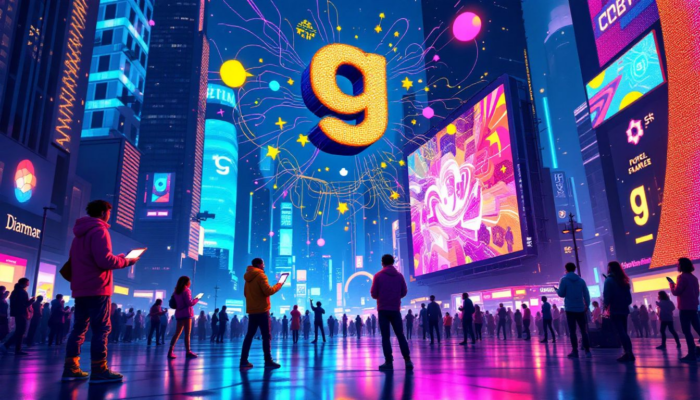
As digital guerrilla marketing continues to evolve in the digital world, emerging trends and innovative tactics are reshaping the landscape. From immersive experiences using augmented reality (AR) and virtual reality (VR) to gamification and guerrilla projections, brands are finding new ways to engage consumers and create memorable experiences. These tactics capture attention and enhance user interaction and brand loyalty.
This section delves into innovative digital guerrilla marketing tactics, providing guerrilla marketing examples and insights on effective implementation.
Augmented Reality (AR) Campaigns
Augmented Reality (AR) is a powerful tool that enhances customer experiences by overlaying digital information onto the real world. AR allows brands to transform regular environments into interactive marketing experiences, creating a sense of immersion and engagement. For example, brands use AR technology for virtual trials or experiences, allowing customers to interact with products more meaningfully.
AR in guerrilla marketing can create memorable and shareable experiences that resonate with audiences. Integrating AR into campaigns offers unique and interactive experiences that set your brand apart from competitors.
Guerrilla Projections
Guerrilla projections marketing uses hidden projectors to create eye-catching visuals on buildings, generating buzz and attracting attention. This unconventional tactic can turn ordinary urban spaces into dynamic and engaging advertising platforms. For instance, the airline Vueling effectively used guerrilla projections to capture public interest and create a memorable brand experience.
However, it’s important to consider the legal risks associated with guerrilla projections. Careful planning and obtaining necessary permissions can help mitigate potential issues and ensure a successful campaign.
Gamification
Incorporating game mechanics into marketing campaigns can significantly boost user engagement. Gamification involves integrating game elements, such as challenges, rewards, and leaderboards, into marketing strategies to enhance interaction and user experience. Brands like Nike have effectively used gamification through interactive websites, online challenges, and gamified experiences to engage customers and build brand loyalty.
Gamification can make marketing fun and interactive, creating a deeper connection with the audience and encouraging repeat engagement. This approach enhances the overall user experience and drives brand visibility and loyalty.
Case Studies: Successful Digital Guerrilla Marketing Campaigns
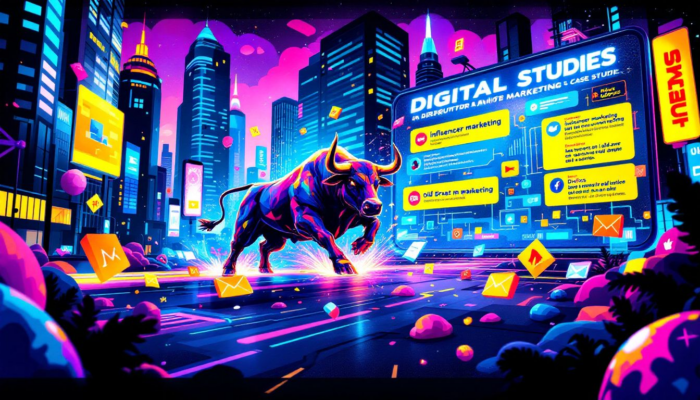
Learning from successful case studies provides valuable insights into what works in digital guerrilla marketing. These campaigns often share key characteristics such as creativity, cost-effectiveness, and resonant content that engages the target audience.
In this section, we’ll explore three successful digital guerrilla marketing campaigns: Blendtec’s “Will It Blend?” series, Samsung’s “Capture The Night” campaign, and Airbnb’s “Unique Experiences” campaign.
Blendtec's "Will It Blend?" Series
Blendtec’s “Will It Blend?” series is a prime example of how creativity and humor can elevate a marketing campaign. The series features Blendtec founder Tom Dickson blending various unusual items, from smartphones to golf balls, to showcase the power and durability of their blenders. This unique approach demonstrated the product’s capabilities and engaged viewers with entertaining and unexpected content.
The success of the “Will It Blend?” series significantly boosted brand awareness and positioned Blendtec as a leader in kitchen appliances. The campaign’s viral nature and its humorous and relatable storytelling made it a memorable example of effective digital guerrilla marketing.
Samsung's Capture The Night Campaign
Samsung’s “Capture The Night” campaign aimed to promote the Galaxy S23 by connecting creativity with technology. The campaign featured a web platform where users could upload night photos and receive music style suggestions based on AI analysis. This innovative use of AI not only engaged users but also highlighted the advanced capabilities of the Galaxy S23 camera.
An important lesson from this campaign is to identify what your target audience loves and incorporate it into your marketing strategy. By leveraging user-generated content and AI technology, Samsung created a personalized and engaging experience that resonated with its audience.
Airbnb's Unique Experiences Campaign
Airbnb’s “Unique Experiences” campaign effectively leveraged emotional connections through unique overnight stays. The “Night At” campaign featured stays at iconic locations such as Van Gogh’s Bedroom, Shark Aquarium, Paris Catacombs, Dracula’s Castle, and the Great Barrier Reef. These unique experiences generated significant media coverage and captured the imagination of potential customers.
The key insight from Airbnb’s campaign is the power of emotional appeal and offering desirable experiences. By creating memorable and shareable experiences, Airbnb was able to connect with its audience on a deeper level and differentiate its brand in a competitive market.
Balancing Creativity and Brand Identity
While creativity is at the heart of guerrilla marketing, maintaining brand identity is equally important. Guerrilla marketing campaigns thrive on creativity, allowing brands to engage audiences in memorable ways. However, the campaigns must reflect the brand’s core values and future positioning to ensure consistency and clarity.
Balancing creativity with brand identity helps create a distinctive brand image and differentiate it from competitors. Guerrilla marketing can build stronger connections with the audience by evoking emotions and providing value.
This section explores maintaining brand consistency and considering ethical implications in guerrilla marketing campaigns.
Maintaining Brand Consistency
Aligning creative campaigns with the brand’s core values ensures they resonate with your audience and enhance brand identity. Use guidelines that reflect your brand’s personality, voice, and visual style to create consistency and clarity in campaigns. Ensuring that marketing efforts are cohesive across all platforms reinforces the brand message without contradictions.
Engaging with the audience through interactive campaigns that align with brand values can bolster community connection and brand loyalty. This strategic integration helps create a unified brand experience that resonates with customers and reinforces their loyalty.
Ethical Considerations
In today’s socially conscious environment, ethical considerations in guerrilla marketing are more important than ever. Marketers increasingly focus on eco-friendly practices, such as using sustainable materials in campaigns. Sustainable practices attract eco-conscious consumers, enhance brand integrity, and build consumer trust.
Social responsibility is becoming a key component, with brands aligning their campaigns with charitable initiatives. Ensuring campaigns do not exploit consumers or mislead audiences is vital for maintaining ethical standards and fostering long-term brand loyalty.
Measuring the Success of Digital Guerrilla Marketing Campaigns
Measuring the success of guerrilla marketing campaigns is crucial for understanding their impact and optimizing future efforts. Key performance indicators (KPIs) like engagement rates, conversion metrics, response rates, and retention rates help evaluate guerrilla marketing effectiveness. Identifying the right metrics to measure is critical to understanding the success of your campaigns.
This section covers measuring success through KPIs, analyzing audience engagement, and adapting strategies based on results, helping refine guerrilla marketing tactics for better outcomes.
Key Performance Indicators (KPIs)
Important KPIs for measuring guerrilla marketing success include clear goals and audience understanding. A well-executed guerrilla marketing campaign can potentially increase sales by 30%. Designing for virality can significantly enhance the impact of guerrilla marketing by encouraging audience sharing.
Leveraging AI in guerrilla marketing helps analyze consumer behavior patterns for better targeting. AI tools provide insights into consumer preferences, allowing brands to create more personalized and engaging campaigns.
Analyzing Audience Engagement
Monitoring customer feedback post-campaign is vital for improving future marketing strategies. By analyzing audience engagement, brands can gain valuable insights into what worked and what didn’t, allowing them to make data-driven decisions for future campaigns.
Adjustments based on performance data can enhance future guerrilla marketing strategies and campaigns. This iterative approach ensures that each campaign builds on the success of the previous one, leading to continuous improvement and better results.
Adapting Based on Results
Collecting feedback after a guerrilla marketing campaign helps identify what worked well and what could be improved. Monitoring digital campaigns in real-time is essential for adjusting and optimizing performance. Iterating and improving campaigns based on performance data enhances their effectiveness and ensures marketing strategies stay relevant and impactful.
Adapting strategies based on data and feedback leads to greater marketing success. This continuous improvement process helps brands stay agile and responsive to changing market conditions and consumer preferences.
Future Trends in Digital Guerrilla Marketing
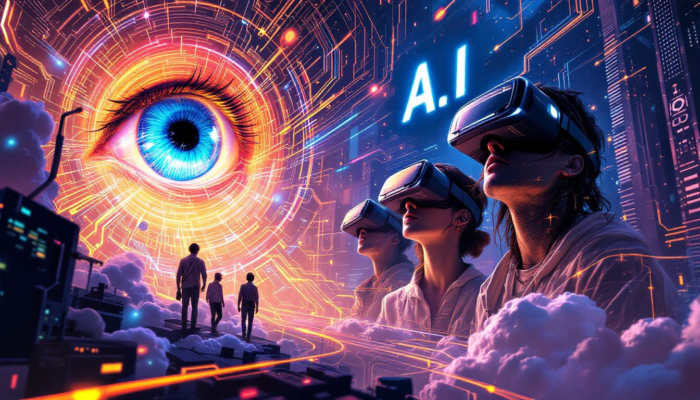
Emerging technologies and evolving consumer preferences are shaping the future of guerrilla marketing. AR, VR, and AI are opening new opportunities for guerrilla marketing, allowing brands to create immersive and personalized experiences. As digital platforms evolve, marketers must stay agile and forward-thinking to effectively leverage new trends and technologies.
Incorporating sustainability initiatives into guerrilla marketing is becoming increasingly important as consumers are more mindful of environmental issues. This section explores future trends in digital guerrilla marketing, focusing on AI, VR, and sustainability.
Artificial Intelligence (AI) in Marketing
AI transforms guerrilla marketing by providing insights into consumer behavior and preferences, allowing brands to create more effective campaigns. AI data analytics helps identify specific demographics and psychographics, ensuring targeted and relevant guerrilla marketing efforts.
Combining AI and storytelling allows brands to craft emotionally engaging narratives that strengthen connections with their audience. AI tools can facilitate crisis management by helping brands navigate ethical and legal challenges in guerrilla marketing campaigns.
Leveraging AI is essential for brands to enhance awareness and attract new audiences in a digital landscape.
Virtual Reality (VR) Experiences
VR technology is transforming guerrilla marketing by creating immersive experiences that captivate audiences. VR has the potential to create highly immersive marketing environments, allowing consumers to engage in unique brand experiences. These experiences can significantly enhance brand visibility and create memorable interactions that resonate with consumers.
By incorporating VR into guerrilla marketing campaigns, brands can offer innovative and engaging experiences that differentiate them from competitors. This approach captures attention and fosters deeper connections with the audience.
Sustainability in Guerrilla Marketing
Sustainability is becoming an increasingly central theme within marketing strategies as consumers are more mindful of environmental issues. Brands incorporating eco-friendly practices can enhance their reputation and drive customer loyalty in today’s market. Examples of eco-friendly guerrilla marketing include Patagonia’s ‘Don’t Buy This Jacket’ campaign and Coca-Cola’s ‘World Without Waste’ initiative.
Companies can adopt strategies such as utilizing recycled materials in their marketing collateral and promoting community-based environmental initiatives. By aligning marketing efforts with sustainability goals, brands can build stronger connections with eco-conscious consumers and enhance brand integrity.
Summary
In summary, guerrilla marketing in the digital age leverages creativity, innovation, and unconventional tactics to create impactful and memorable campaigns. By understanding the evolution and key characteristics of digital guerrilla marketing, brands can effectively harness the power of social media, AR, VR, and AI to engage audiences and enhance brand visibility.
Successful case studies, such as Blendtec’s “Will It Blend?” series, Samsung’s “Capture The Night” campaign, and Airbnb’s “Unique Experiences” campaign, provide valuable insights into what works in digital guerrilla marketing.
Balancing creativity with brand identity and ethical considerations is essential for maintaining brand integrity and building consumer trust. Measuring the success of guerrilla marketing campaigns through KPIs, audience engagement analysis, and adapting strategies based on results ensures continuous improvement and better outcomes. As we look to the future, embracing emerging trends such as AI, VR, and sustainability will be key to staying ahead in the ever-evolving digital landscape.

Frequently Asked Questions About Guerrilla Marketing in The Digital Age
What is guerrilla marketing?
Guerrilla marketing is all about using creative, low-cost tactics to grab attention and promote your brand in unexpected ways. It’s a fun and impactful approach to connecting with customers!
How has guerrilla marketing evolved in the digital age?
Guerrilla marketing has evolved by leveraging digital tools like AR, VR, and AI, making campaigns more engaging and tailored to individual audiences. This shift allows brands to create memorable experiences that resonate with consumers more effectively.
What are some key characteristics of digital guerrilla marketing?
Digital guerrilla marketing is about creativity and innovation while leveraging social media and data analytics. It focuses on high engagement and encourages user sharing for impactful, cost-effective campaigns.
How can brands leverage social media for guerrilla marketing?
Brands can boost their guerrilla marketing by crafting viral content and running interactive campaigns that get people talking. Partnering with influencers is also a great way to extend your reach and make a real impact!
What are some future trends in digital guerrilla marketing?
Future trends in digital guerrilla marketing will likely focus on using AI and VR to create immersive experiences alongside sustainability initiatives to appeal to eco-conscious consumers. It’s all about making your campaigns more personalized and impactful!

Master Guerrilla Marketing in the Digital Age
Ready to stand out with creative, cost-effective marketing strategies? Guerrilla marketing can give your business the edge it needs in today’s crowded digital landscape.
Take the Next Step:
- Contact Us: Discuss how guerrilla marketing can work for your business.
- Schedule a Consultation: Book a free session to explore bold, innovative strategies tailored to your goals.
- Learn More: Dive deeper into expert marketing tips and techniques.
Make a big impact with smart, unconventional marketing—let’s start today!
About the author
Mark A. Hope is the co-founder and Partner at Asymmetric Marketing, an innovative agency dedicated to creating high-performance sales and marketing systems, campaigns, processes, and strategies tailored for small businesses. With extensive experience spanning various industries, Asymmetric Marketing excels in delivering customized solutions that drive growth and success. If you’re looking to implement the strategies discussed in this article or need expert guidance on enhancing your marketing efforts, Mark is here to help. Contact him at 608-410-4450 or via email at mark.hope@asymmetric.pro.
